Preface
For most programmers, the work experience of the first-line Internet is a lifelong pursuit. In fact, the requirements of large companies for academic qualifications are far less than we think. In recent years, Internet companies have paid more attention to technology, so they have improved their own technology. Level is the key to winning the offer. The front-line Internet is represented by Alibaba. It is necessary to figure out what technology is popular, to what extent we need to learn, and how deep we master it.
The 283-page pdf compiled today contains five core contents. If you can stay up late to finish it, it will be no problem to grade Ali P7.
Five core contents, including:
- Concurrent programming
- Performance tuning
- Spring family bucket
- Nosql cache architecture
- Distributed & Microservice
Of course, the length of the article is limited. It is impossible for me to write all the five core contents. I can only elaborate on the following contents. If you need the complete pdf version, click here to get it for free!

01 Concurrent programming of core content
1. Getting started with multithreading

2. Practical combat in high concurrency scenarios
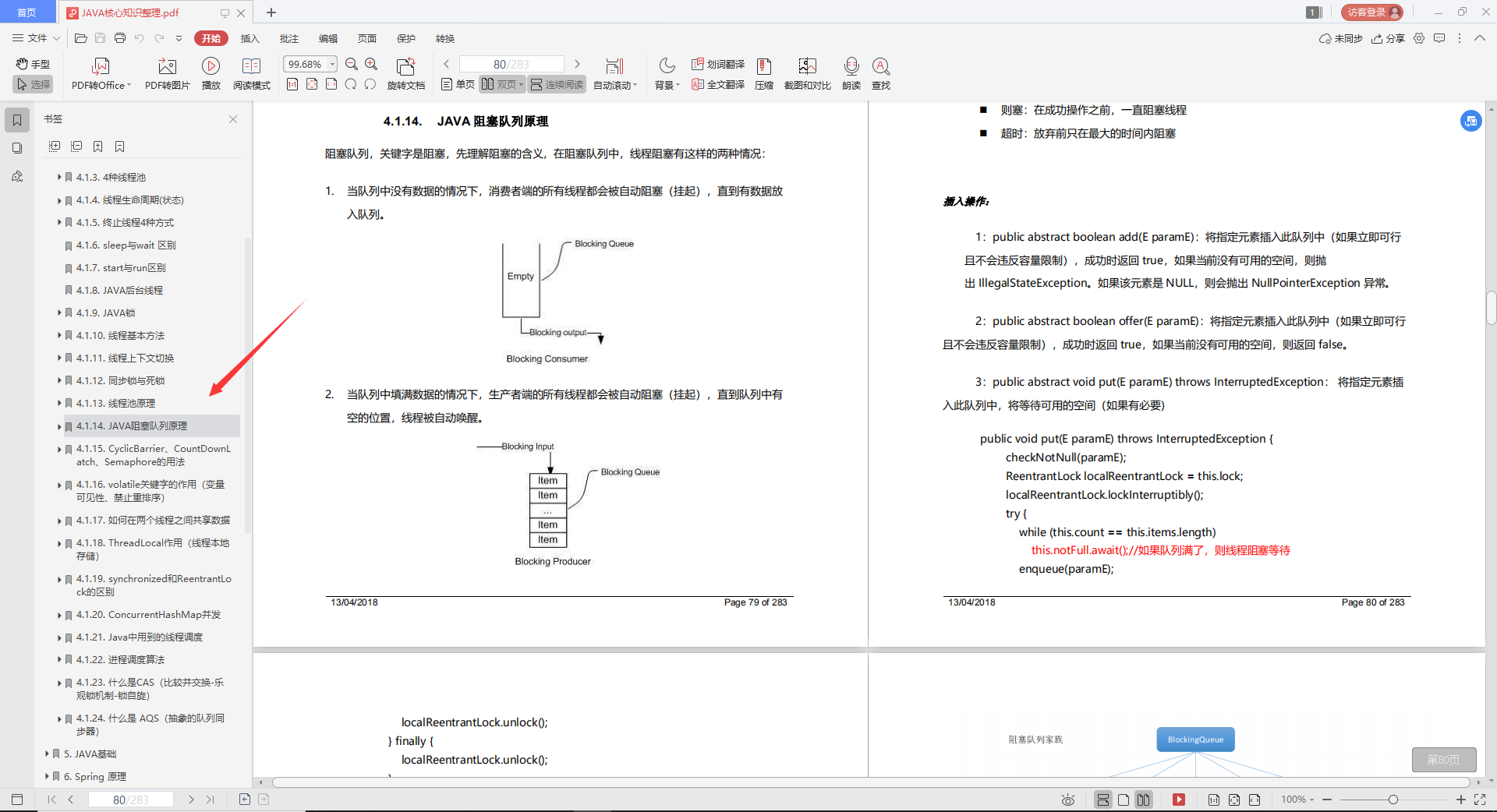
3.CAS and explicit lock
4. Interpretation of concurrent container source code and practical application
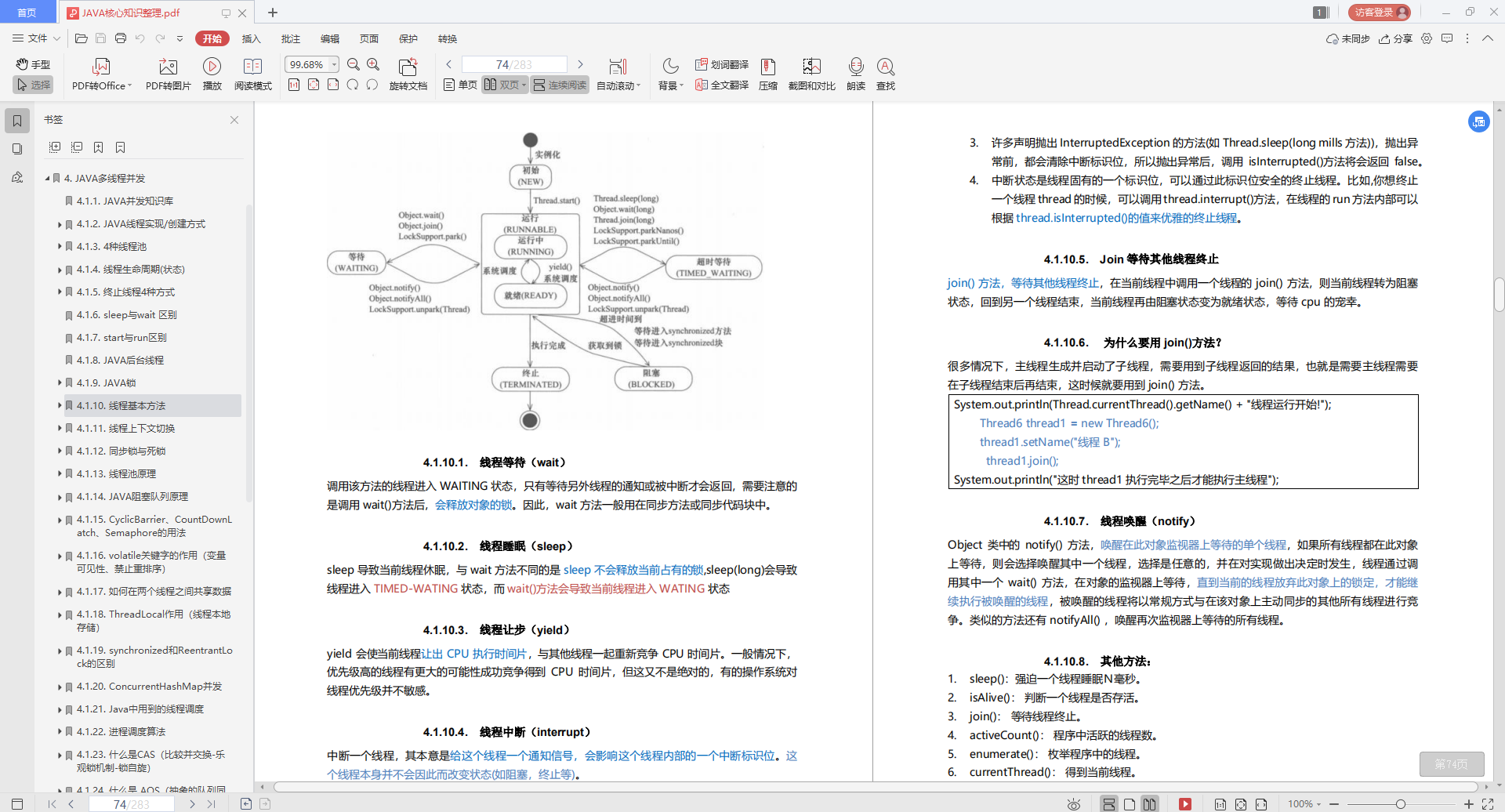
5. Secret of the bottom of the thread pool
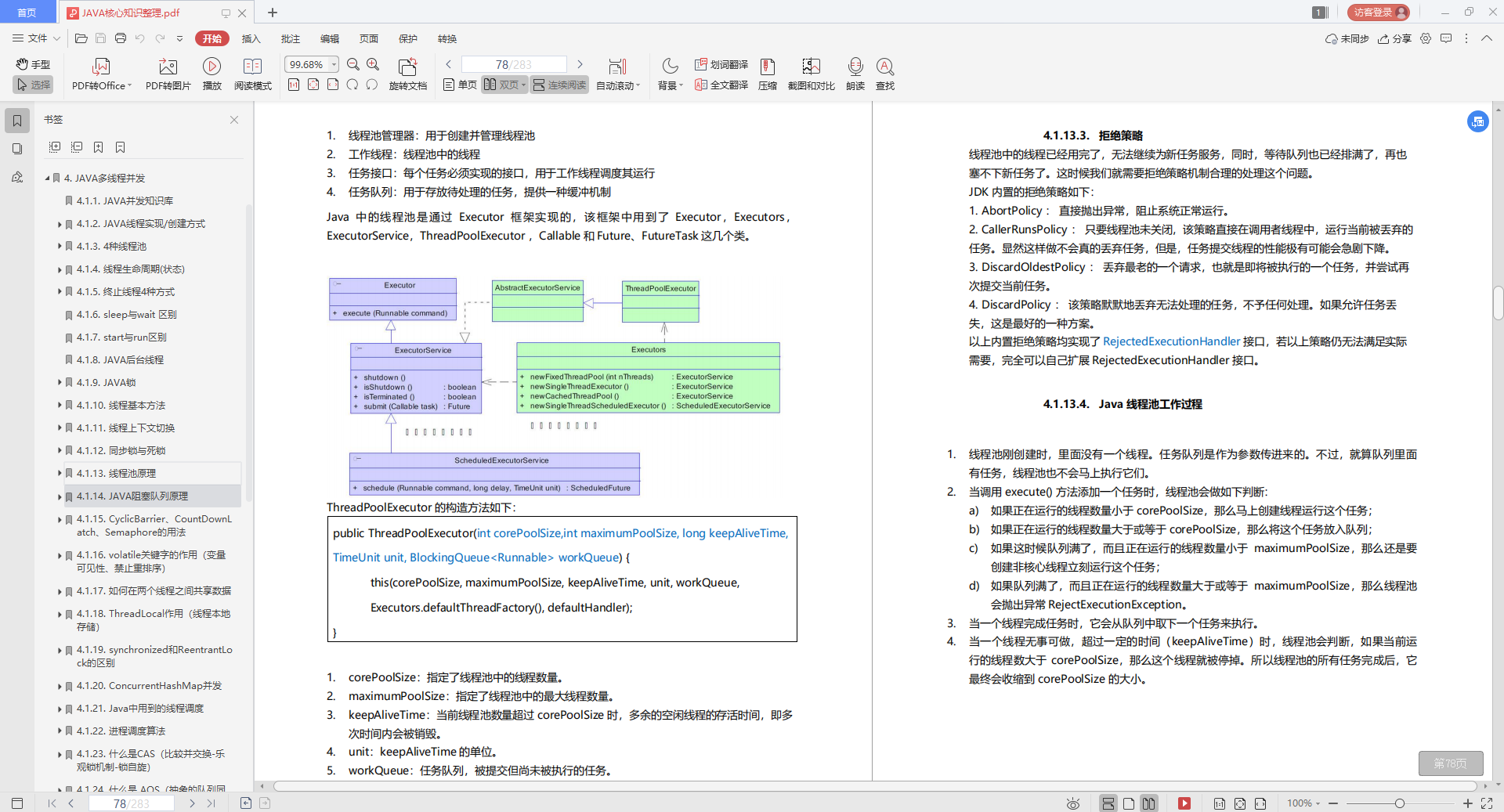
6. Concurrency security solutions
Additional content: Concurrent programming advanced interview questions
- Have you used Synchronized? What is the principle?
- You just mentioned acquiring a lock on an object. What exactly is this "lock"? How to determine the lock of an object?
- What is "reentrancy" and why is Synchronized a reentrant lock?
- What optimizations has JVM made to Java's native locks?
- Why is Synchronized an unfair lock?
- What is lock elimination and lock coarsening?
- Why is Synchronized a pessimistic lock? What is the principle of optimistic locking? What is CAS and what are its characteristics?
- Is optimistic locking necessarily good?
- Compared with Synchronized, what is the difference in the implementation principle of ReentrantLock?
- So please talk about the AQS framework?
- Please compare the similarities and differences between Synchronized and ReentrantLock in as much detail as possible
- How does ReentrantLock achieve reentrancy?
- Apart from ReetrantLock, what other concurrency tools in JUC have you been exposed to?
- Please talk about ReadWriteLock and StampedLock.
- How to synchronize Java threads with each other? What synchronizers do you know about? Please introduce them separately.
- CyclicBarrier and CountDownLatch look very similar, please compare?
- How is the thread pool implemented in Java?
- Several core construction parameters for creating a thread pool?
- How are threads in the thread pool created? Was it created at the beginning with the thread pool started?
- Since it is mentioned that different thread pools can be created by configuring different parameters, what thread pools are implemented by default in Java? Please compare their similarities and differences
- How to submit threads in Java thread pool?
- What is Java's memory model, and how do threads in Java see each other and see each other's variables?
- Could you talk about the characteristics of volatile? Why can it guarantee the visibility of variables to all threads?
- Since volatile can guarantee the visibility of variables between threads, does it mean that operations based on volatile variables are concurrently safe?
- Please compare the similarities and differences between volatile and Synchronized.
- Please talk about how ThreadLocal solves concurrency safety?
- Many people say that ThreadLocal should be used with caution, what do you think? Talk about your understanding; what should I pay attention to when using ThreadLocal?
- Now there are three threads T1, T2, and T3. How do you ensure that T2 is executed after T1 is executed, and T3 is executed after T2 is executed?
- What are the advantages of the Lock interface over synchronized blocks in Java? You need to implement an efficient cache, which allows multiple users to read, but only allows one user to write, in order to maintain its integrity, how would you implement it?
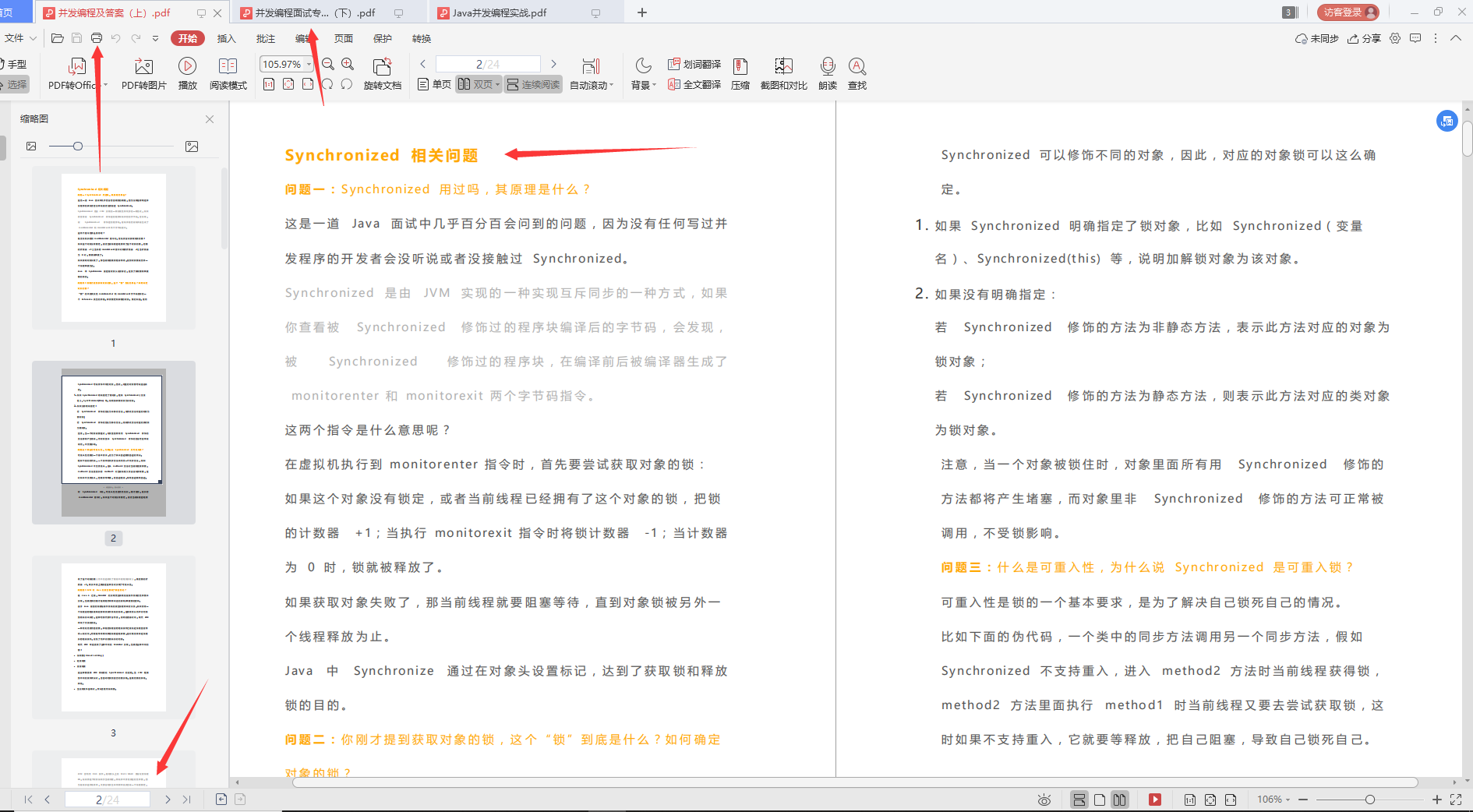
02 Performance tuning of core content
1. Getting started with performance tuning
2. I/O and network tuning
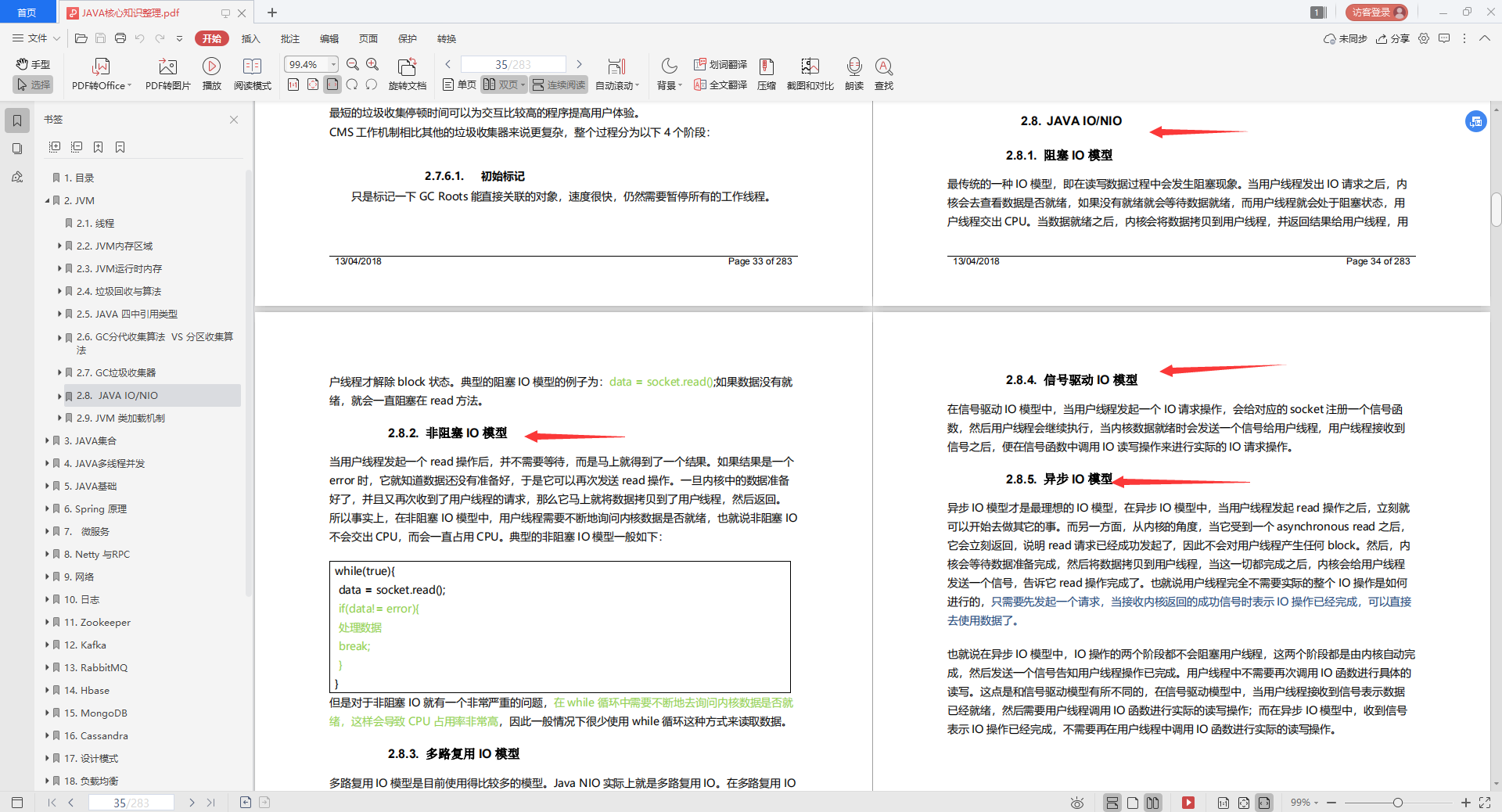
3. Algorithm tuning
4. In-depth understanding of JVM tuning
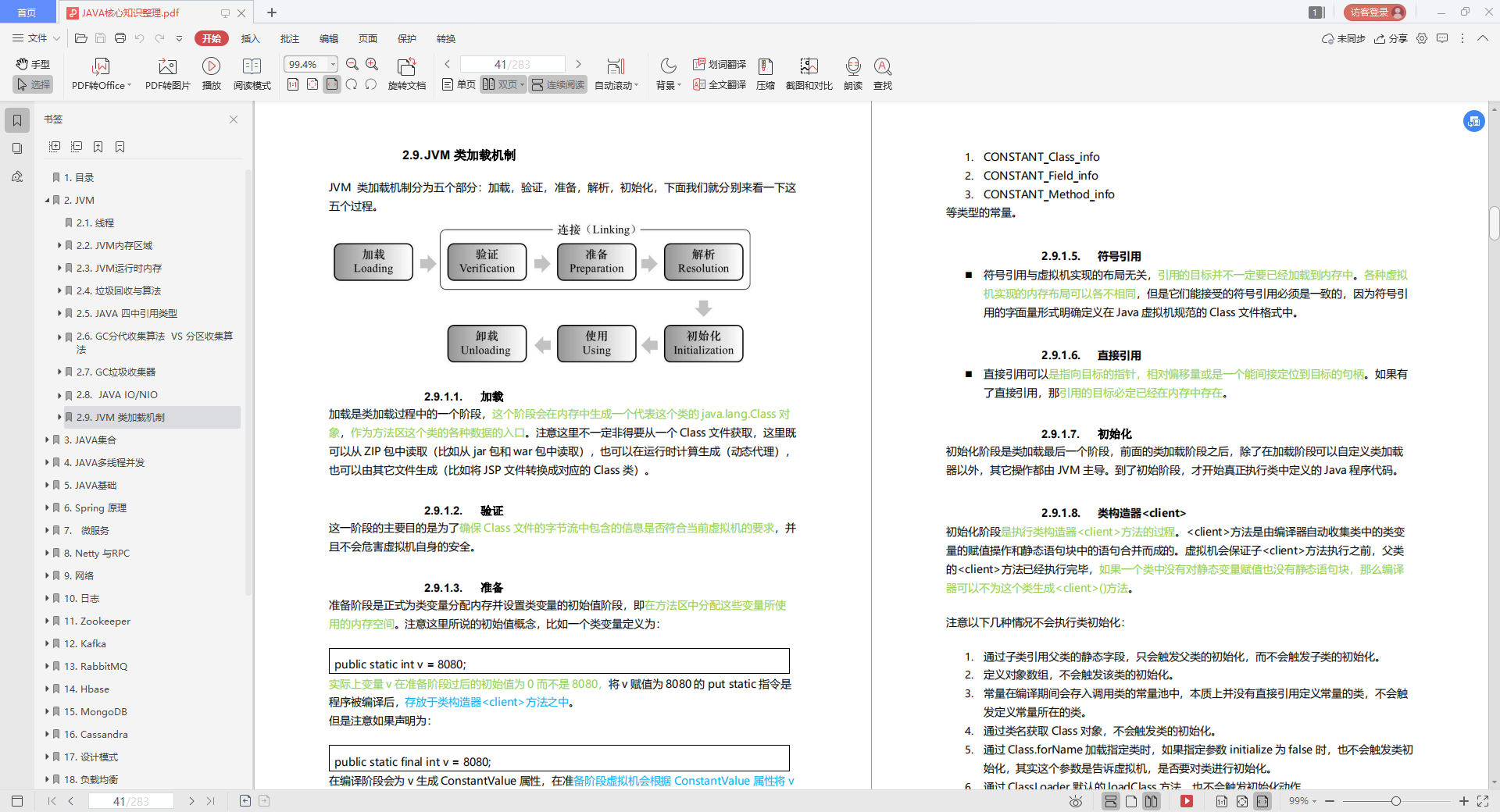
5. Build efficient storage (MySQL tuning)
600 million high-concurrency scenarios tuning actual combat
Additional content: Tuning interview questions (Mysql performance optimization + JVM performance optimization)
- The SQL query statement determines which type of index to create and how to optimize the query?
- The difference between MySQL B+Tree index and Hash index?
- Tell me about the concurrency of transactions?
- Talk about the transaction isolation level, what problems each level will cause, which level is MySQL by default?
- What exactly are covering indexes and clustered indexes?
- What is the optimization principle of the leftmost prefix of Mysql?
- Talk about the Mysql index optimization specification?
- Talk about MySQL high concurrency environment solution?
- Memory model and partition, what needs to be put in each area in detail?
- What is the parent delegation model of the class loader?
- What are the JVM garbage collection algorithms and collectors?
- How to judge whether an object is alive?
- What are the GC collectors?
- What are the characteristics of the CMS collector and G1 collector?
- JVM memory is divided into several areas, what is the role of each area?
- How does a highly concurrent system optimize performance based on the G1 garbage collector?
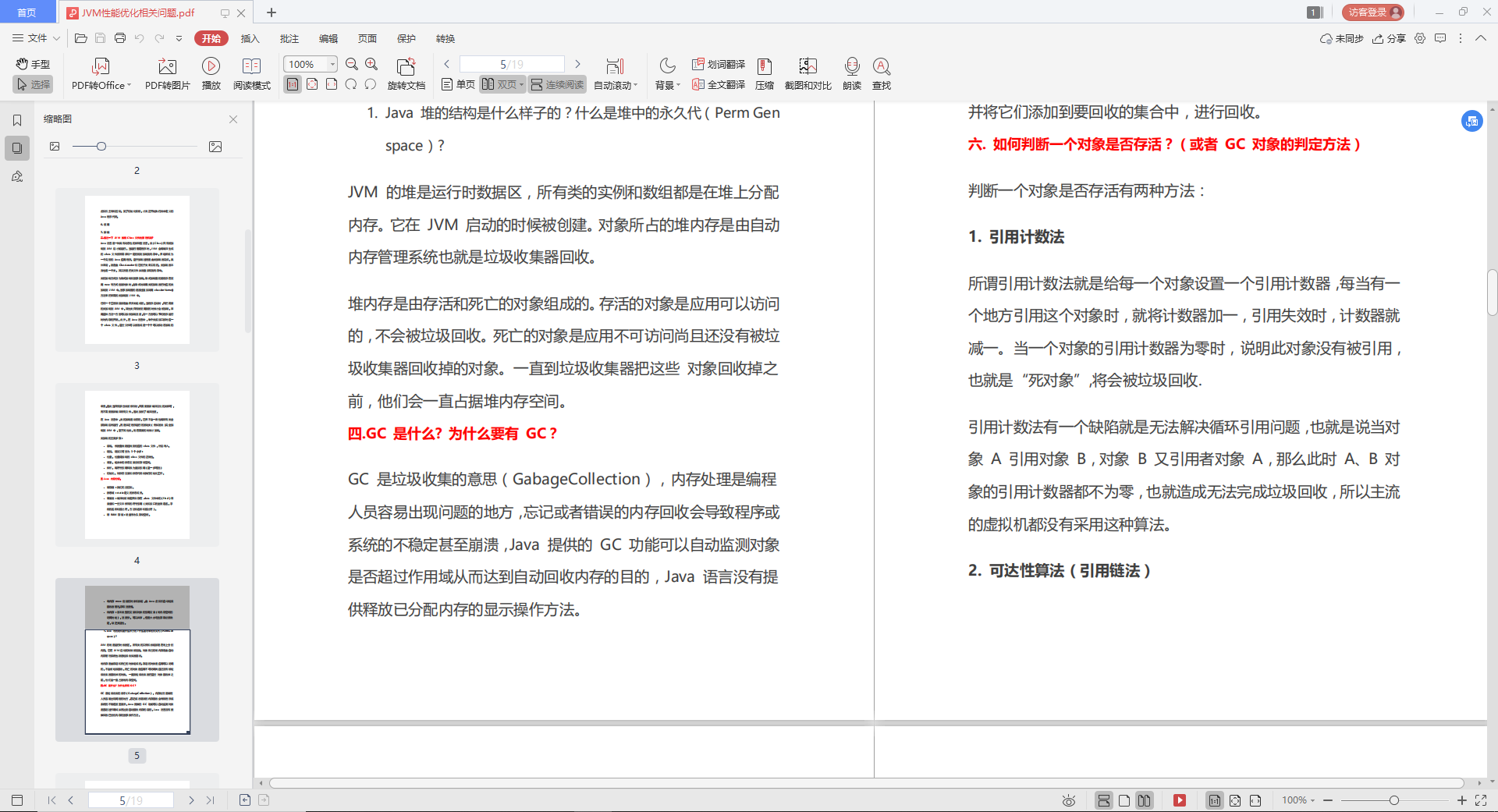
03 The core content of Spring Family Bucket
1. Quickly master Spring in half an hour (basic)
2. Spring Advanced Guide
3.SpringMVC
4. Source code analysis of Spring.5x core mechanism
- SpringMVC framework process and principle analysis
- Spring I0C source code analysis
- Spring AOP source code analysis
- Spring transaction and source code analysis
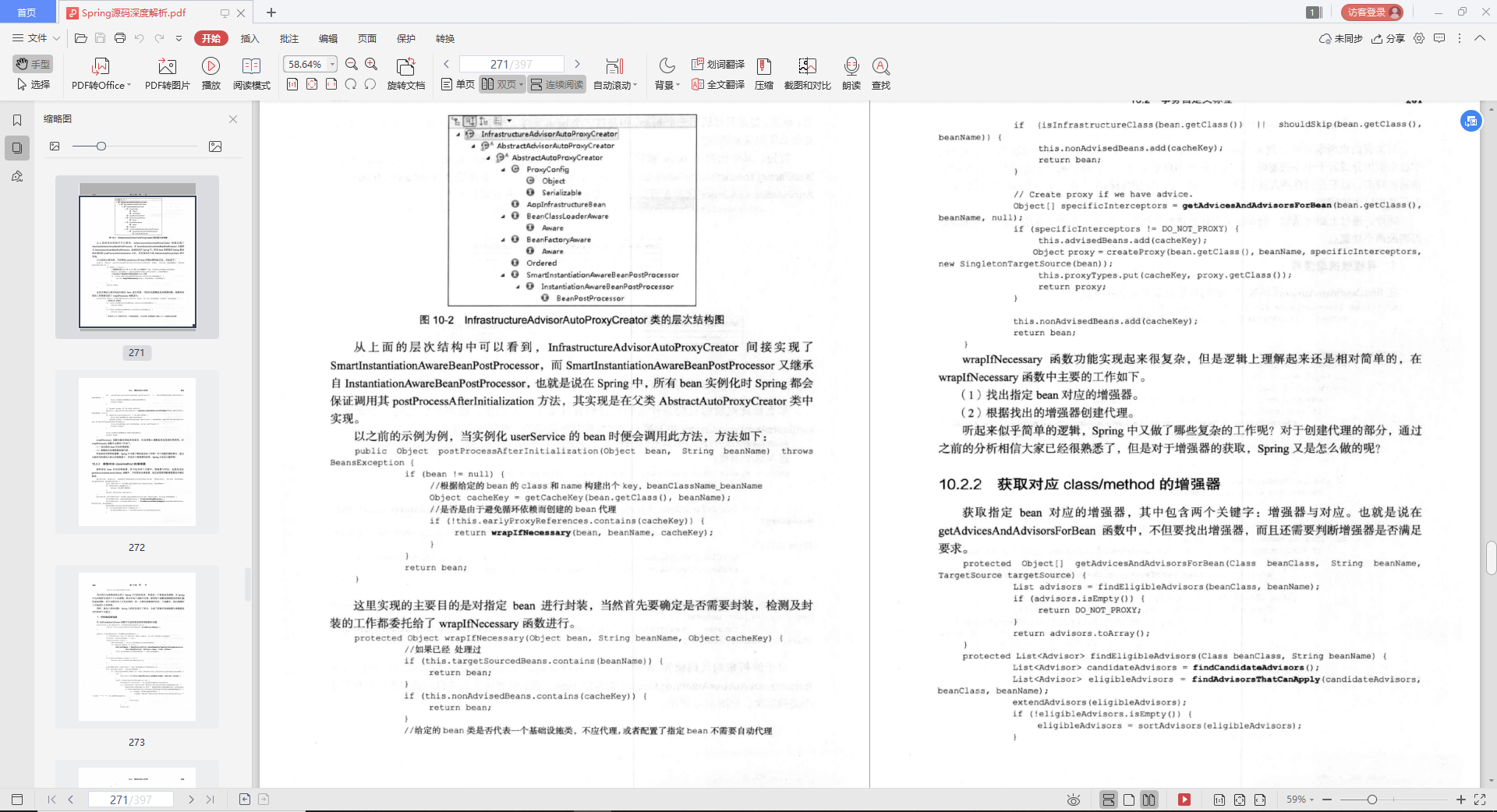
5. Online shopping e-commerce small project actual combat (imitation Xiaomi Mall)
The combined development of spring+springMVC+mybatis framework, plus Mysql database, developed a small actual project, the specific effects are shown as follows:
Additional content: Spring family bucket of advanced interview questions
- What are the benefits of using the Spring framework?
- What is Inversion of Control (IOC)? What is dependency injection?
- Please explain the IoC in the Spring framework?
- What is the difference between BeanFactory and ApplicationContext?
- How many ways to configure Spring?
- How to configure Spring based on XML configuration?
- How to configure Spring in a Java-based configuration?
- How to configure Spring with annotations?
- Please explain the life cycle of Spring Bean?
- What is the difference between the scope of Spring Bean?
- What are Spring inner beans?
- Are singleton beans in the Spring framework thread-safe?
- Please give an example of how to inject a Java Collection in Spring?
- How to inject a Java.util.Properties into Spring Bean?
- Please explain the autowiring of Spring Bean?
- Please explain the difference in auto-assembly mode?
- How to turn on annotation-based automatic assembly?
- Please give an example to explain the @Required annotation?
- Please give an example to explain the @Autowired annotation?
- Please give an example of @Qualifier annotation?
- What is the difference between constructor injection and set value injection?
- What are the different types of events in the Spring framework?
- What is the difference between FileSystemResource and ClassPathResource?
- What design patterns are used in the Spring framework?
- What are the advantages of Spring Boot?
- What is JavaConfig?
- How to reload the changes on Spring Boot without restarting the server?
- What is a monitor in Spring Boot?
- How to disable Actuator endpoint security in Spring Boot?
- How to run Spring Boot application on a custom port?
- What is YAML?
- How to achieve the security of Spring Boot applications?
- How to integrate Spring Boot and ActiveMQ?
- How to use Spring Boot to implement paging and sorting?
- What is Swagger? Have you implemented it with Spring Boot?
- What are Spring Profiles?
- What is Spring Batch?
- What is a FreeMarker template?
- How to use Spring Boot to implement exception handling?
- Which starter maven dependencies did you use?
- What is a CSRF attack?
- What is WebSockets?
- What is AOP?
- What is Apache Kafka?
- How do we monitor all Spring Boot microservices?
- What are the advantages of using Spring Cloud?
- What does service registration and discovery mean? How to achieve Spring Cloud?
- What is the significance of load balancing?
- SpringMVC process?
- Is the controller of SpringMvc a singleton mode? If so, what are the problems and how to solve them?
- If you have also used struts2, what are the differences between springMVC and struts2?
- The comment of the controller in SpingMvc generally uses that. Is there any other comment that can be substituted?
- What is the effect of @RequestMapping annotation on classes?
- How to map a request to a specific method?
- If in the interception request, I want to intercept the method submitted by get, how to configure?
- How to get Request or Session in the method?
- I want to get the parameters passed in from the front desk in the interception method, how do I get it?
- If there are many parameters passed in at the front desk, and these parameters are all an object, how to quickly get this object?
- What is the return value of the function in SpringMvc?
- How to set redirection and forwarding in SpringMVC?
- What object does SpringMvc use to transfer data from the background to the foreground?
- There is a class in SpringMvc that merges views and data together. What is it called?
- How to put the data in ModelMap into Session?
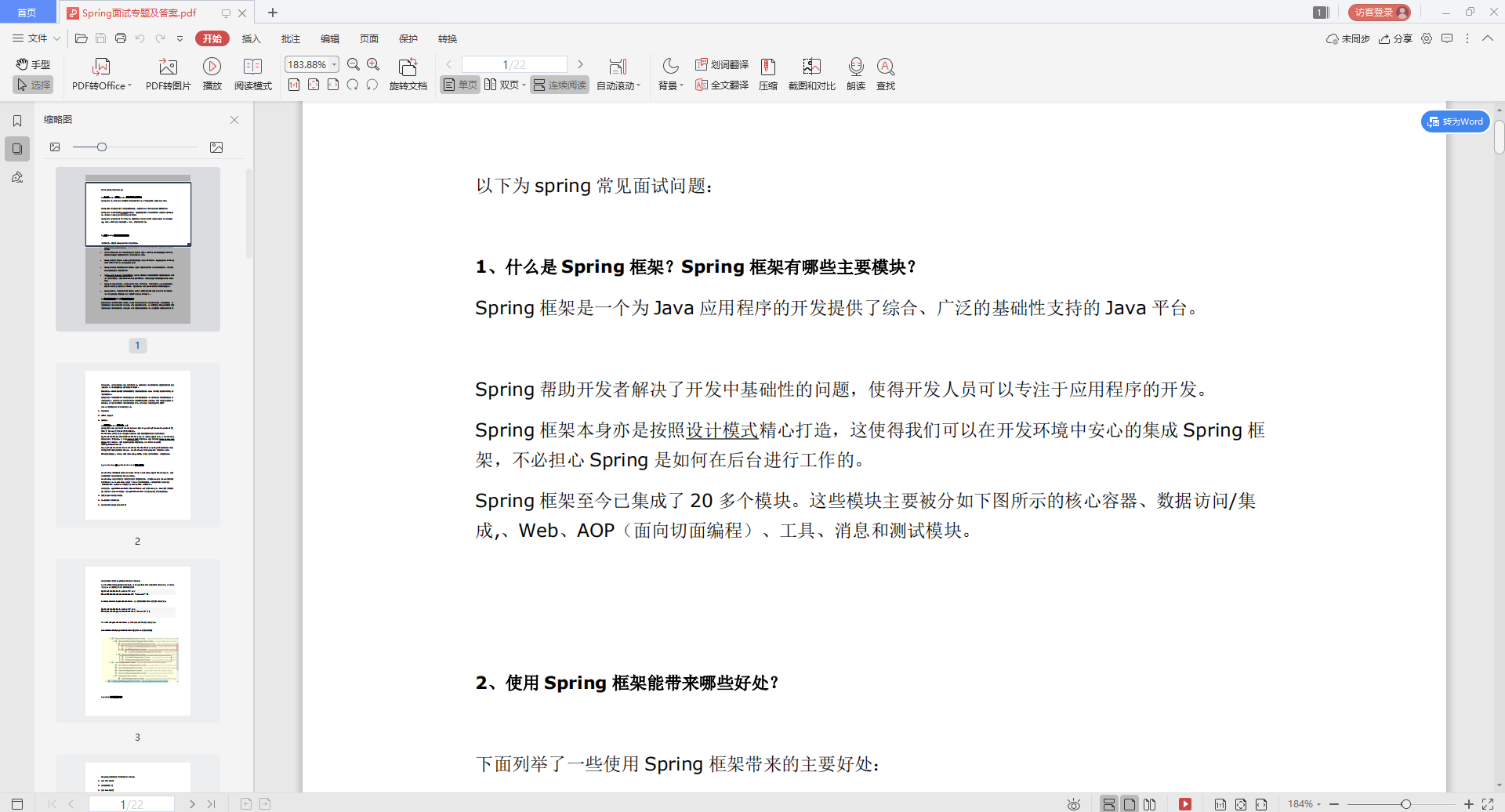
04 NoSql cache architecture of core content
1. The basics of Redis (data structure + persistence + pipeline operation + handwritten Jedis)
2. Redis advanced advanced (slow query + transaction + master-slave replication + sentinel + high-performance cluster)
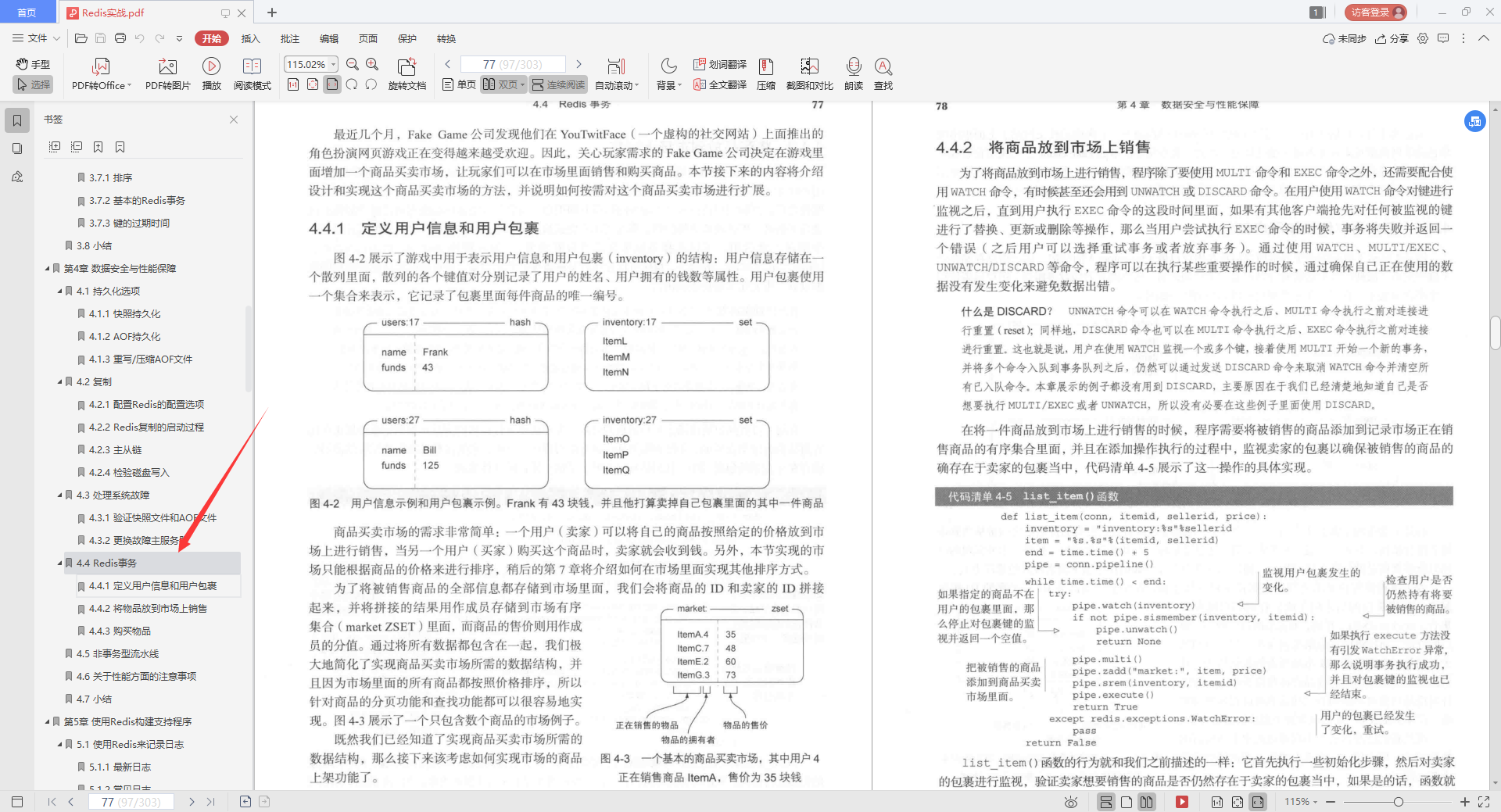
300 million traffic Redis combat
- Implement distributed lock based on Redis
- Session consistency solution and
- Redis cache and database consistency problem
- Redis + Lua achieves current limit
- Cache breakdown, cache penetration, cache avalanche prevention
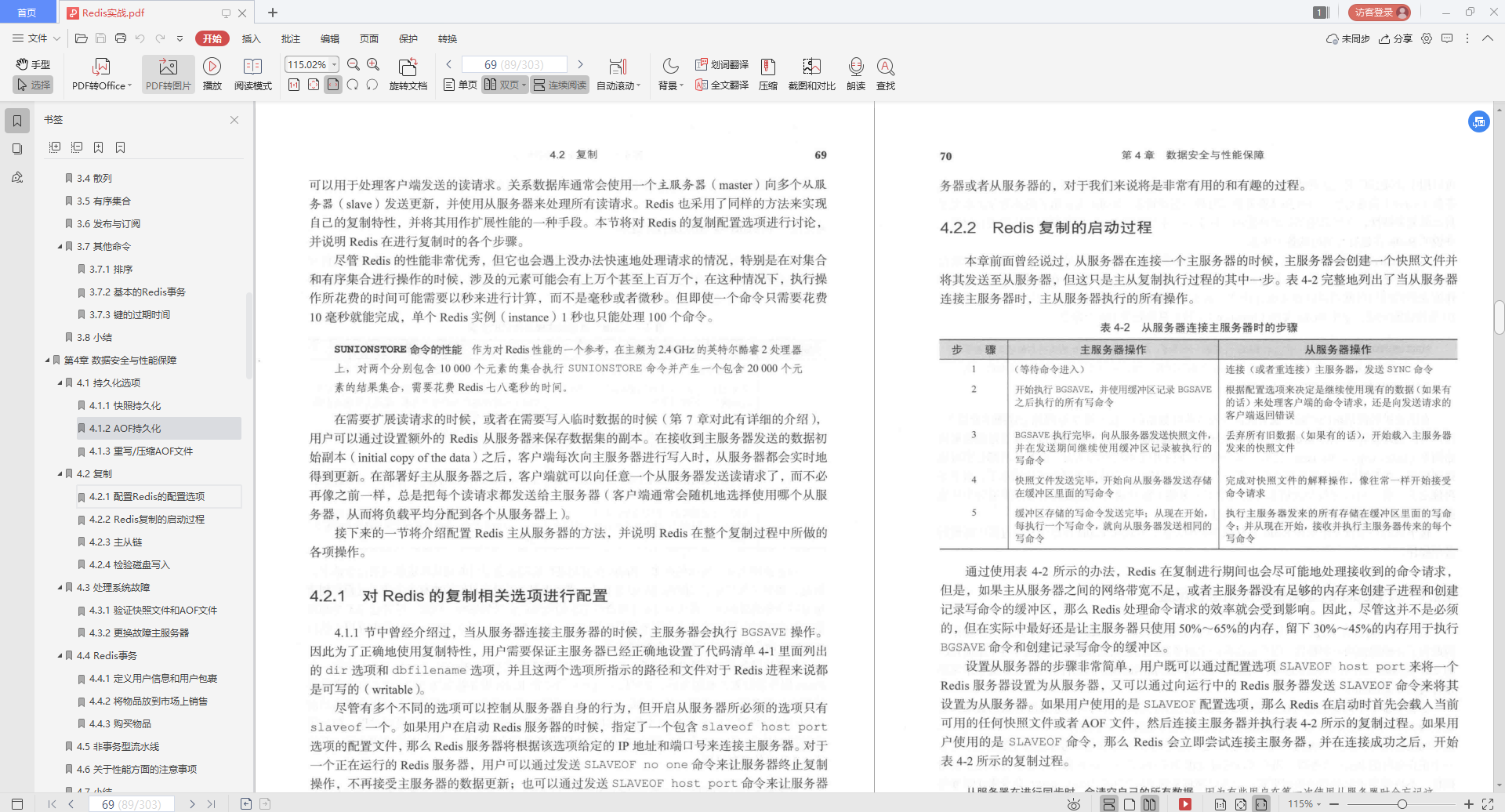
4. MongoDB (Introduction-Advanced-Actual Combat)
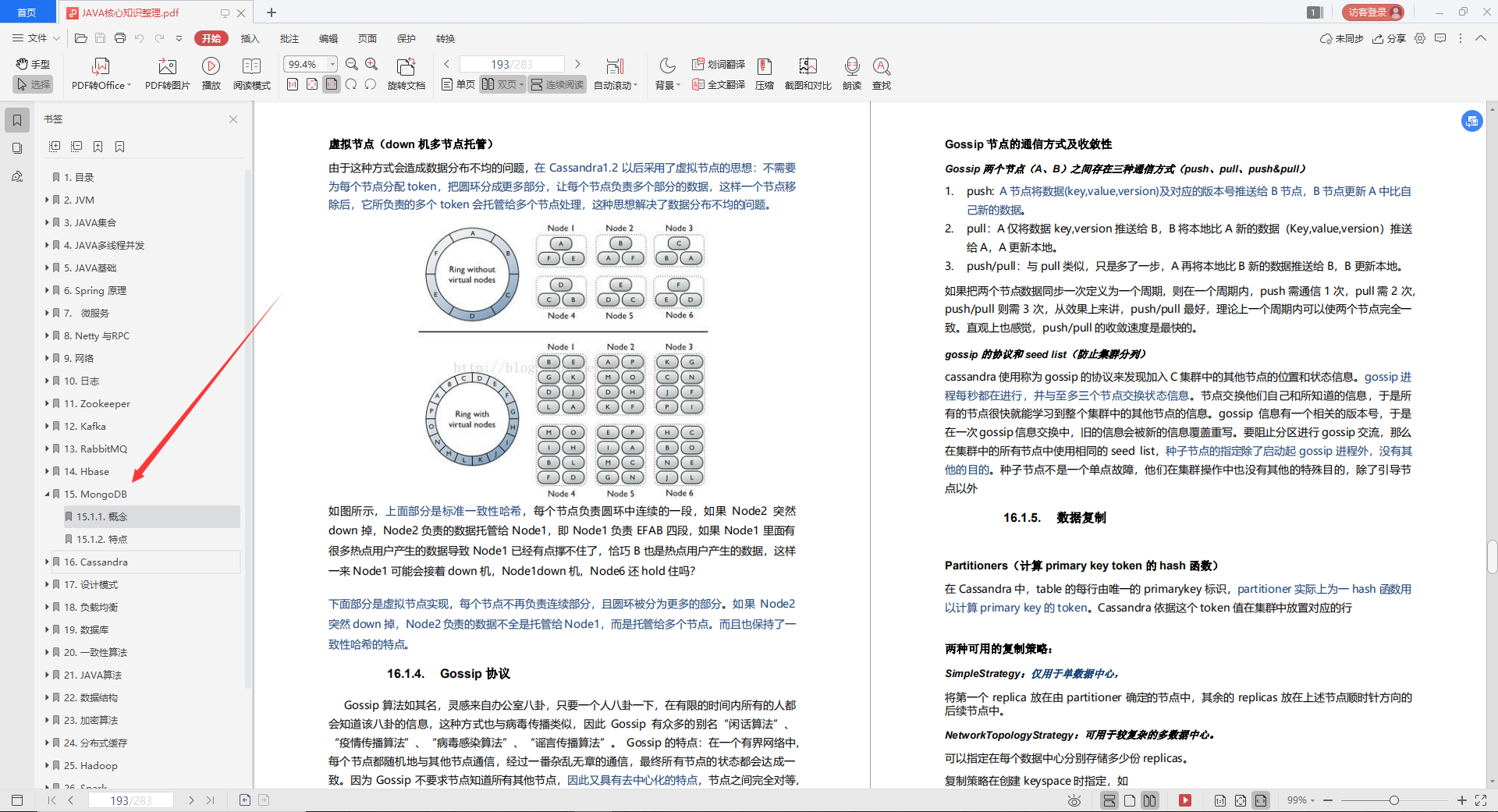
Additional content: Redis+MongoDB high-frequency interview questions
- What are the advantages of Redis over memcached?
- Which data types does Redis support?
- What kinds of data elimination strategies does Redis have?
- Why does Redis need to put all the data in memory?
- What should the Redis cluster solution do? What are the options?
- Under what circumstances will the Redis cluster solution cause the entire cluster to be unavailable?
- There are 2000w data in MySQL and only 20w data in redis. How to ensure that the data in redis are all hot data?
- What are the suitable scenarios for Redis?
- What are the advantages and disadvantages of Jedis and Redisson?
- How to understand Redis transaction?
- What is the use of pipelines in Redis?
- What are the commands related to Redis transactions?
- How does Redis optimize memory?
- How does the Redis recycling process work?
- Do you know what Redis partition implementation schemes are there?
- How to expand Redis persistent data and cache?
- ......
- What do you mean by NoSQL database? What is the direct difference between NoSQL and RDBMS? Why use and not use NoSQL database? Talk about the advantages of NoSQL database?
- What types of NoSQL databases are there?
- What is the most basic difference between MySQL and MongoDB?
- How do you compare MongoDB, CouchDB and CouchBase?
- What makes MongoDB the best NoSQL database?
- Should I start a sharded or non-clustered sharded MongoDB environment?
- How do sharding and replication work?
- When will the data expand to multiple shards?
- What happens when I try to update a document on a chunk that is being migrated?
- MongoDB builds an index on A:{B,C}. Will queries A:{B,C} and A:{C,B} use indexes?
- Does MongoDB support stored procedures? If so, how to use it?
- How to understand the GridFS mechanism in MongoDB, why does MongoDB use GridFS to store files?
- ...

05 Distributed core content & microservices
1. What is a microservice?
2. SpringBoot rapid advancement (source code + core annotations + data routing + handwritten SpringBoot)
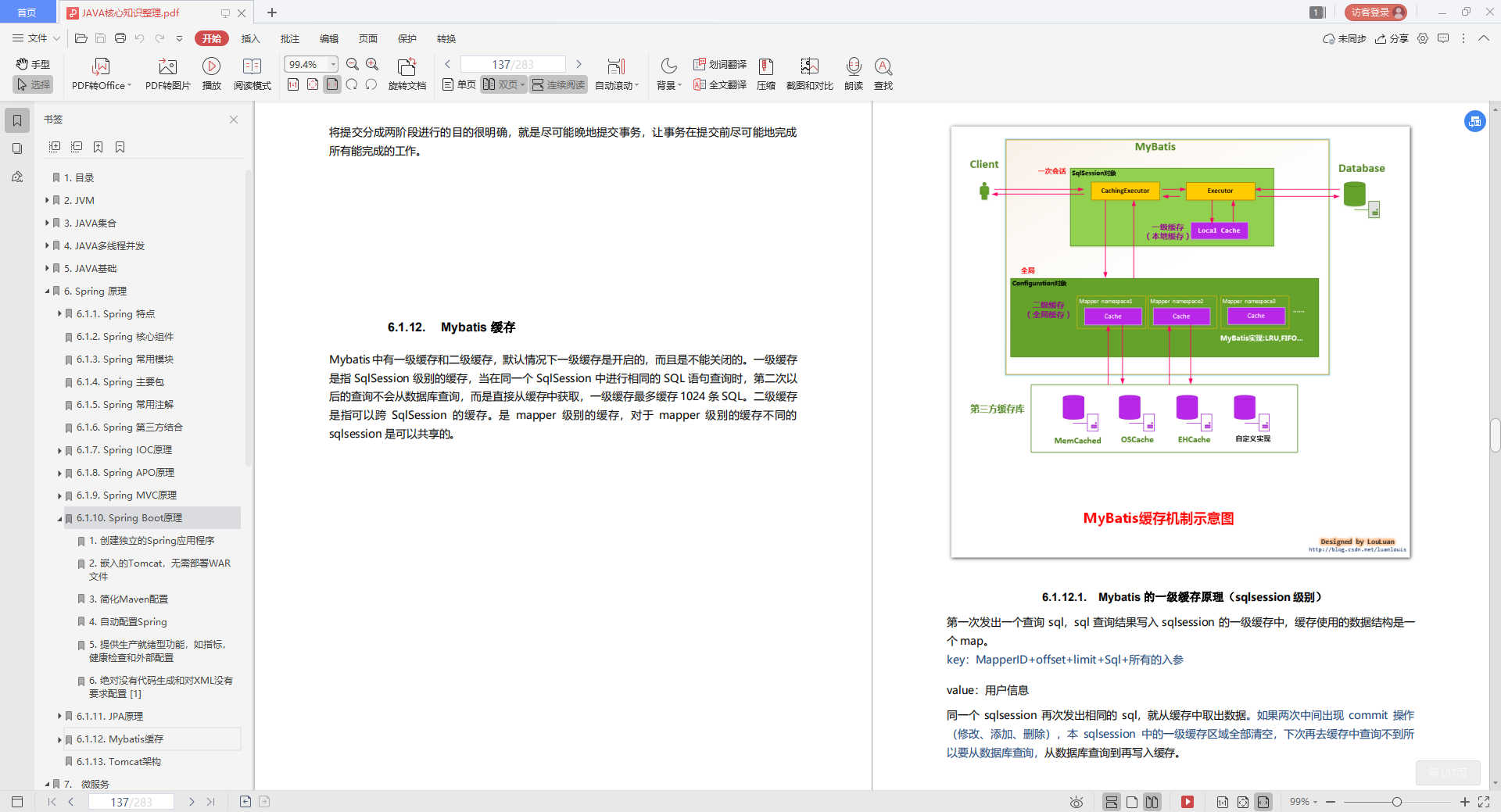
3. SpringCloud rapid advancement
- Eureka service registration and discovery source code analysis
- Detailed explanation of distributed coordination service Zookeeper
- Client load balancing Ribbon source code analysis
- Feign declarative service call details
- Hystrix, service fault-tolerant degradation and circuit breaker mechanism
- Zuul implements microservice gateway
- Distributed Configuration Management Config
- Bus message bus
- Stream message-driven microservices
- Distributed service tracking SpringCloud Sleuth
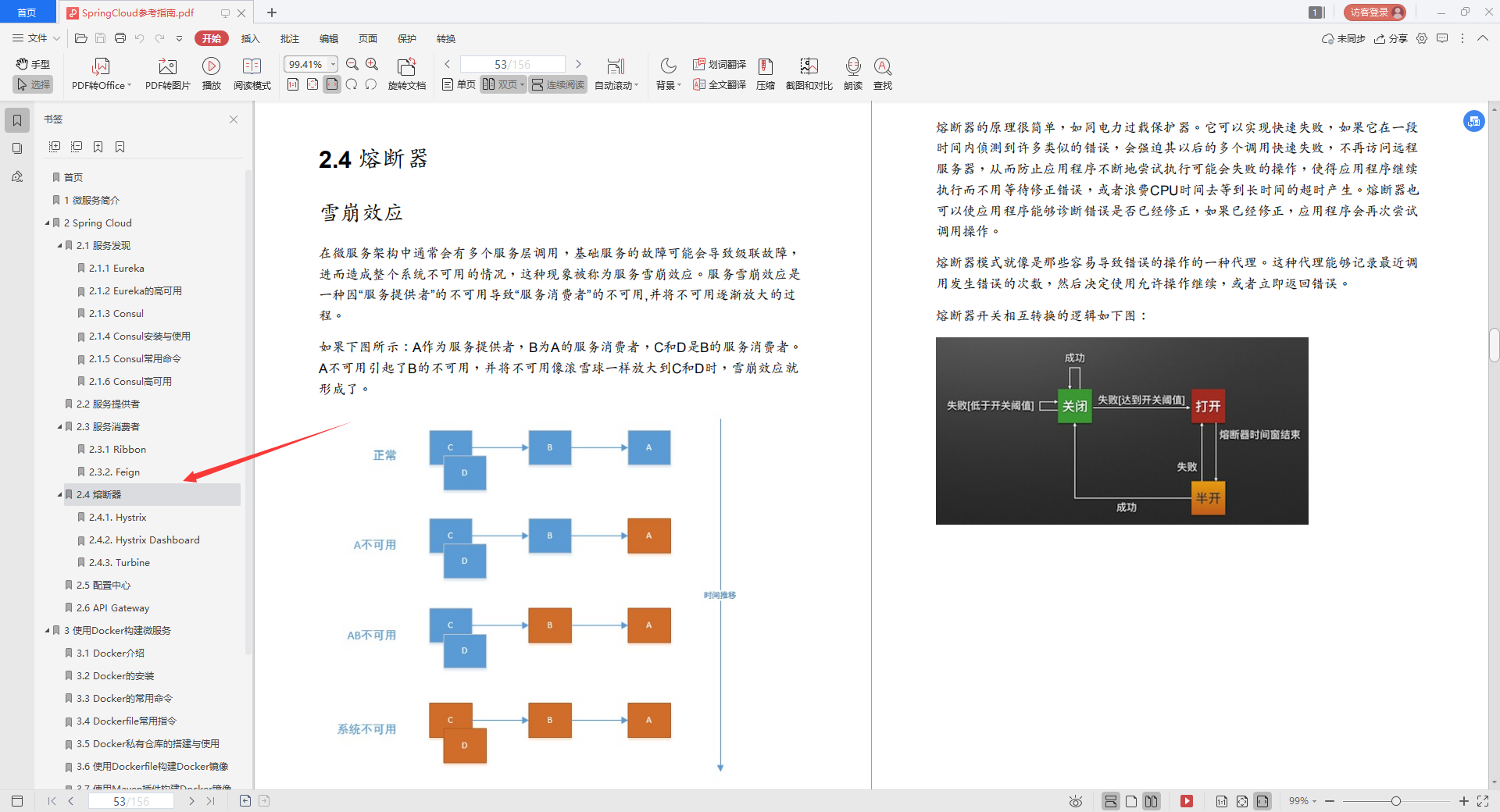
4. Docker easy to master and actual combat
- Introduction to Docker images, containers and warehouses
- Docker File build
- Docker builds private libraries
- Docker Compose deployment script design
- Docker Redis distributed deployment
- Spring Cloud project Dockerized actual combat
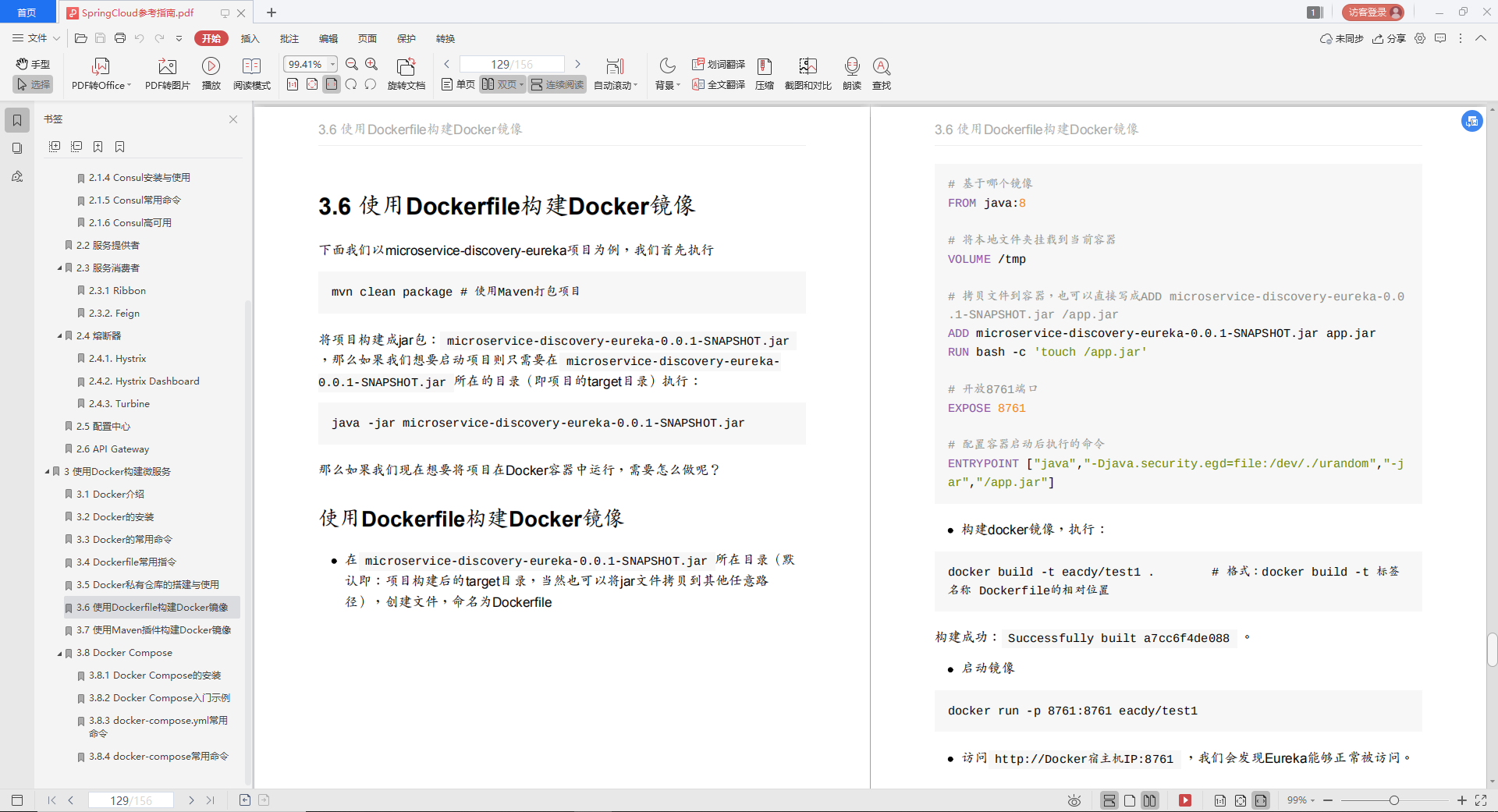
5. Distributed actual combat solution
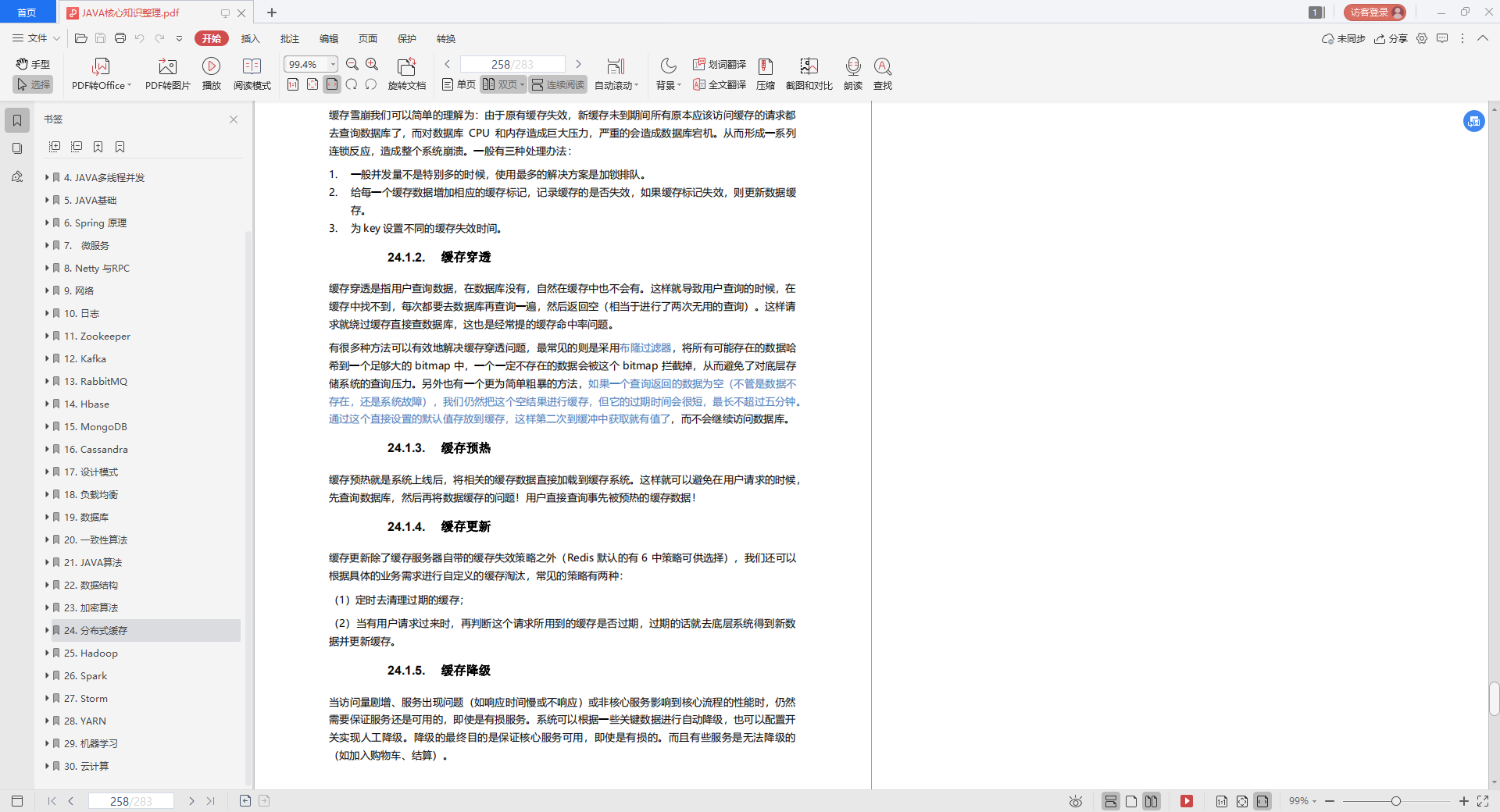
to sum up
There are no shortcuts to change your life. You need to take this path yourself. Only deep thinking, continuous reflection and summary, maintaining the enthusiasm for learning, and building your own complete knowledge system step by step are the ultimate ways to win. It is also the mission that programmers should undertake.
The above five core Java advanced PDFs can be shared with everyone for free. Friends who need the full version, just need to support me.
How to get it: Click here to get it for free!